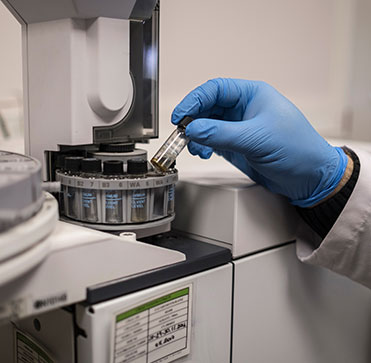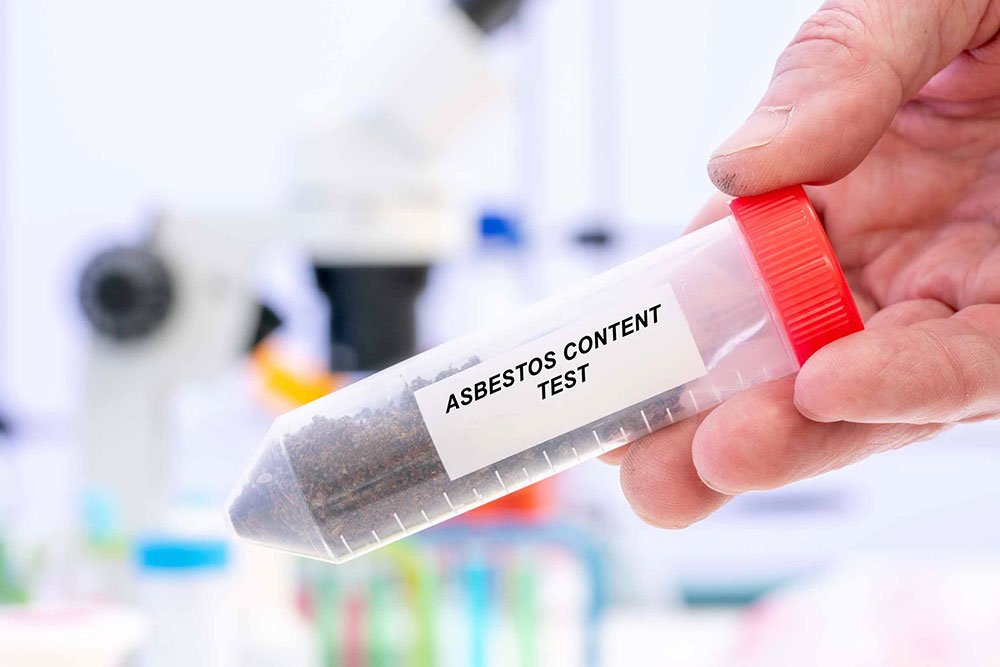The Total Process of Accredited Asbestos Checking to Make Sure Building Conformity
In the realm of property management and compliance, the process of recognized asbestos screening stands as an essential part to guarantee the safety and security and well-being of residents. From the first analysis to the final analysis of outcomes, each stage plays an important function in establishing the visibility of asbestos within a property.
Accredited Asbestos Testing: Initial Assessment
In carrying out the preliminary assessment for certified asbestos testing, a careful assessment of the building's materials is critical to accurately identify possible asbestos-containing materials. This vital action entails aesthetically inspecting all areas of the home, including ceilings, walls, flooring, insulation, and other building materials that might harbor asbestos. Special focus is provided to products that are vulnerable to harm or disturbance, as these circumstances can launch damaging asbestos fibers into the air. Additionally, sampling of believed materials might be needed to validate the visibility of asbestos via laboratory evaluation.
Certified asbestos assessors adhere to strict procedures established by regulative bodies to guarantee the precision and reliability of the screening process. By diligently recording searchings for and making use of advanced screening techniques, assessors can give homeowner with a detailed record describing the existence of asbestos, if any kind of, and the suggested actions for mitigation or elimination. This first assessment sets the structure for succeeding activities to address asbestos concerns and make certain the safety and security and conformity of the residential or commercial property.
Sample Collection Procedures for Asbestos Examining
Reliable sample collection procedures are necessary in making certain accurate asbestos screening outcomes and conformity with regulative requirements. When accumulating examples for asbestos screening, it is crucial to follow strict procedures to decrease the threat of contamination and guarantee the integrity of the outcomes.
First of all, it is necessary to recognize the believed asbestos-containing materials (ACMs) and prioritize sampling locations based on factors such as the material's condition, availability, and capacity for disruption. Asbestos Testing. Examples should be gathered from various areas within the residential or commercial property to offer an extensive evaluation of asbestos existence
During sample collection, accredited experts should use ideal personal safety equipment (PPE) to protect against asbestos direct exposure. They must make use of clean tools, such as non reusable handwear covers and plastic bed linen, to prevent cross-contamination in between examples. Samples should be thoroughly accumulated using a specified method, such as damp cleaning or coring, and securely sealed in impermeable containers to preserve their honesty throughout transportation to the lab for evaluation.
Laboratory Evaluation Process for Asbestos Samples
Upon conclusion of the sample collection process, the asbestos examples are thoroughly transported to recognized labs for precise evaluation. The first step in the research laboratory evaluation process is example preparation, where the collected samples are very carefully processed to draw out the asbestos fibers.

Once the evaluation is total, a detailed report is produced, describing the findings and verifying whether asbestos is existing, the kind of asbestos fibers identified, and the concentration degrees. This information is vital for residential property proprietors to take the required steps to make sure compliance with asbestos regulations and guard the health and wellness of occupants.

Reporting and Interpretation of Asbestos Examination Results
Approved asbestos screening laboratories give detailed reports that use crucial insights into the existence, kind, and focus degrees of asbestos fibers located in samples accumulated from residential properties. These reports are necessary for home owners and supervisors to recognize the danger presented by asbestos and make notified decisions regarding its management or elimination. The records normally consist of info on the methods used for screening, the areas where samples were taken, the type of asbestos recognized (such as chrysotile, amosite, or crocidolite), and the focus levels of asbestos fibers discovered.
Interpreting these results calls for experience to analyze the prospective health and wellness risks related to asbestos direct exposure, identify the appropriate strategy, and guarantee regulatory conformity (Asbestos Testing). Depending upon the searchings for, referrals may vary from continued monitoring and upkeep to encapsulation or total asbestos reduction. Residential property owners should very carefully evaluate these reports and speak with asbestos specialists to establish a browse around this site comprehensive strategy for dealing with any type of asbestos concerns identified
Making Certain Home Conformity With Asbestos Laws
To maintain adherence Our site with asbestos guidelines, residential or commercial property owners have to diligently implement steps to guarantee compliance with appropriate laws and standards. This consists of performing normal asbestos examinations by certified specialists to determine any kind of existence of asbestos-containing products within the home. When asbestos is identified, homeowner must comply with asbestos monitoring intends that overview appropriate control, elimination, or encapsulation procedures to avoid direct exposure and spread of asbestos fibers. Conformity also involves maintaining in-depth records of asbestos screening, upkeep, and removal activities for assessment objectives.
Homeowner must supply asbestos understanding training to employees and occupants to lessen the danger of asbestos exposure and ensure proper handling of products that might include asbestos. Additionally, it is critical to remain notified regarding any type of updates or modifications in asbestos policies to adjust management methods appropriately. By proactively attending to asbestos conformity needs, homeowner can develop a secure atmosphere for owners and minimize possible legal and health risks connected with asbestos exposure.
Final Thought
In conclusion, recognized asbestos testing is a vital process for guaranteeing residential property compliance with policies. The initial analysis, sample collection treatments, lab analysis, and interpretation of results are very important steps in this procedure. By complying with these treatments, homeowner can determine and address any kind of asbestos threats existing, safeguarding the wellness and safety of owners and maintaining conformity with regulatory demands.